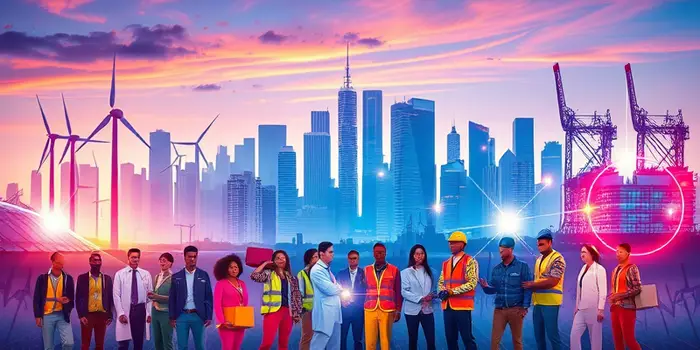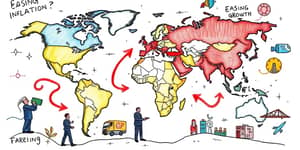
In 2025, despite a backdrop of economic uncertainty, global labor markets have demonstrated remarkable stability. While a persistent yet easing inflation trends and a forecasted global growth rate of 3.2% have tested both employers and workers, employment rates have surprisingly held firm. This resilience arises from rapid adaptation by businesses, targeted upskilling initiatives, and the emergence of new sectors hungry for talent.
However, this overall steadiness masks important regional and structural shifts. Middle-income countries are enjoying falling unemployment, while low-income nations are grappling with a slight uptick from 5.1% to 5.3%. Advanced economies, including the United States, have stabilized around 4% unemployment—higher than the record lows of 2023 but still historically strong.
At the heart of this equilibrium is resilient job growth amid slowdown. Even as gross domestic product moderates, layoff rates remain low and wage growth persists. In February 2025, private production and non-supervisory wages rose 4.1% year-over-year in the U.S., reinforcing consumer confidence and spending power.
Global economies face multiple headwinds: geopolitical tensions disrupting supply chains, the lingering impact of the climate crisis, and rising living costs. Yet, employment remains a bright spot. Businesses are recalibrating growth strategies, leaning on technology to boost productivity, and shifting to more flexible operational models. Meanwhile, job seekers benefit from an expanding range of roles, even as the gap between openings and applicants narrows.
To illustrate the current environment, key economic indicators for 2025 are summarized below:
The World Economic Forum’s Future of Jobs Report 2025 paints an optimistic picture: 170 million new jobs will be created by 2030, while 92 million roles are displaced, resulting in a net employment growth of 7%. This transformation is driven by four key sectors:
These areas not only offer abundant opportunities but also align with global priorities such as climate action and social wellbeing. Workers transitioning into these fields can tap into incentives, apprenticeship programs, and public-private partnerships designed to bridge talent gaps.
As automation and AI reshape roles, employers estimate that 30-40% of core job skills will change by 2030. Staying competitive demands a relentless focus on learning. Online platforms, corporate academies, and vocational training centers are expanding capacity to teach high-demand competencies.
Key skills for the decade ahead include:
Governments and NGOs are also stepping up investment in community programs, ensuring that marginalized populations aren’t left behind in this transition.
With 50% of businesses planning to increase full-time hiring in 2025 and 85% expecting higher revenues, organizations are doubling down on people-centric policies. Flexibility, remote/hybrid work models, and a focus on mental health have moved from perks to essentials.
Major employer initiatives include:
These approaches not only attract top talent but also build a resilient, adaptable workforce capable of navigating uncertainty.
Looking forward, the challenge is clear: how to sustain this balance as transformation accelerates. Business leaders must continue investing in training, harnessing the power of digital platforms, and fostering a culture of lifelong learning. At the same time, policymakers need to support labor mobility, fund skilling initiatives, and ensure social safety nets for displaced workers.
We are witnessing an accelerating adoption of emerging technologies and an unprecedented shift towards skills-based hiring. This moment represents more than just an economic adjustment; it is a chance to build a more inclusive, sustainable future of work. By aligning public and private efforts, we can close the skills gap and ensure that job creation outpaces displacement.
Despite the headwinds, there is reason for optimism. The resilience of labor markets in 2025 demonstrates that when businesses, workers, and governments collaborate, challenges become opportunities. By embracing innovation, upskilling at scale, and thoughtful policy, we can ensure that the global workforce emerges stronger, more versatile, and better equipped for the workforce of tomorrow.
References













